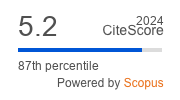Article | Open Access
The Dark Side of Descriptive Representation: Bodies, Normalisation and Exclusion
| Views: | 6036 | | | Downloads: | 4747 |
Abstract: This contribution elaborates on the role model function of descriptive representatives. We seek to elaborate on potentially negative effects of role models, as we think they can endanger a feminist project of dismantling hierarchical power relations. When society attributes descriptive representatives the position of role models, the former no longer simply stand for their groups in a socio-demographic manner. Role models also stand for them in an exemplary manner, allowing them to prescribe a set of appropriate or desirable traits and behaviours. The presence and performance of role models, thus, powerfully shapes the context to the representation of disadvantaged groups. Because of their exemplary function, the personal experiences and life trajectory of descriptive representatives may be elevated to a standard; potentially causing the interests and demands of other group members to be considered abnormal or marginal. Also, role models may, paradoxically, promote exclusion. Representatives’ social differences provide them with powerful symbolic resources to speak on behalf of their group. While such authority may help them put previously overlooked interests on the agenda, their personal take on things may limit the terms of the debate, as it cuts out alternative intersections of social positions; making it difficult to voice alternative group perspectives. In this regard, role models may hamper the feminist project which precisely implies giving voice to excluded groups so as to broaden the range of voices articulated.
Keywords: alternative voices; descriptive representation; feminism; political role models; symbolic representation
Published:
© Petra Meier, Eline Severs. This is an open access article distributed under the terms of the Creative Commons Attribution 4.0 license (http://creativecommons.org/licenses/by/4.0), which permits any use, distribution, and reproduction of the work without further permission provided the original author(s) and source are credited.


